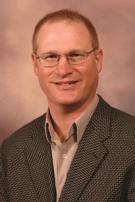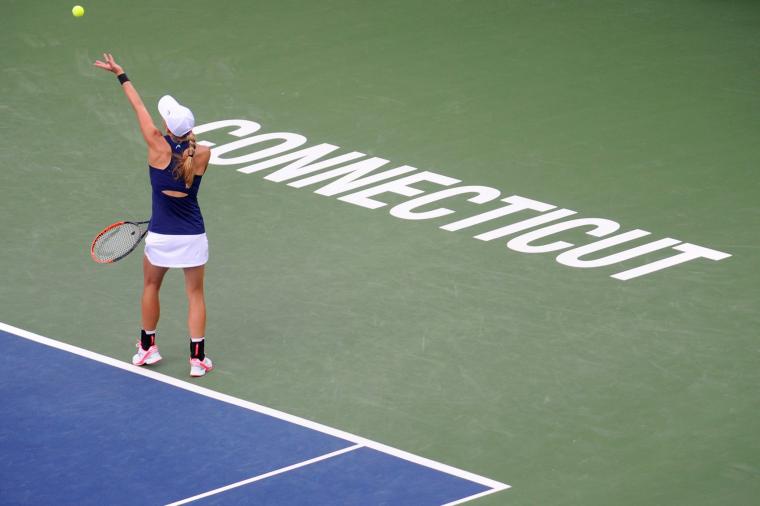
In August, tennis stepped onto the big stage of the US Open in New York City. Now, the sport is poised to step onto its next huge showcase: The 64-acre, 102-court USTA National Campus in Orlando, Florida, will officially open its doors on Jan. 2.
The U.S. Tennis Association (USTA) says this “New Home for American Tennis,” the largest tennis facility in the U.S., and possibly the world, will be a place where tennis enthusiasts can come to play, learn and watch the game. The campus will have cushioned acrylic hard courts, European red clay courts, Har-Tru green clay courts, and more. Technology plays an important role, too—all courts will have live streaming, and 32 courts will be PlaySight “SmartCourts,” with permanently installed analytic cameras using 3D visual imaging.
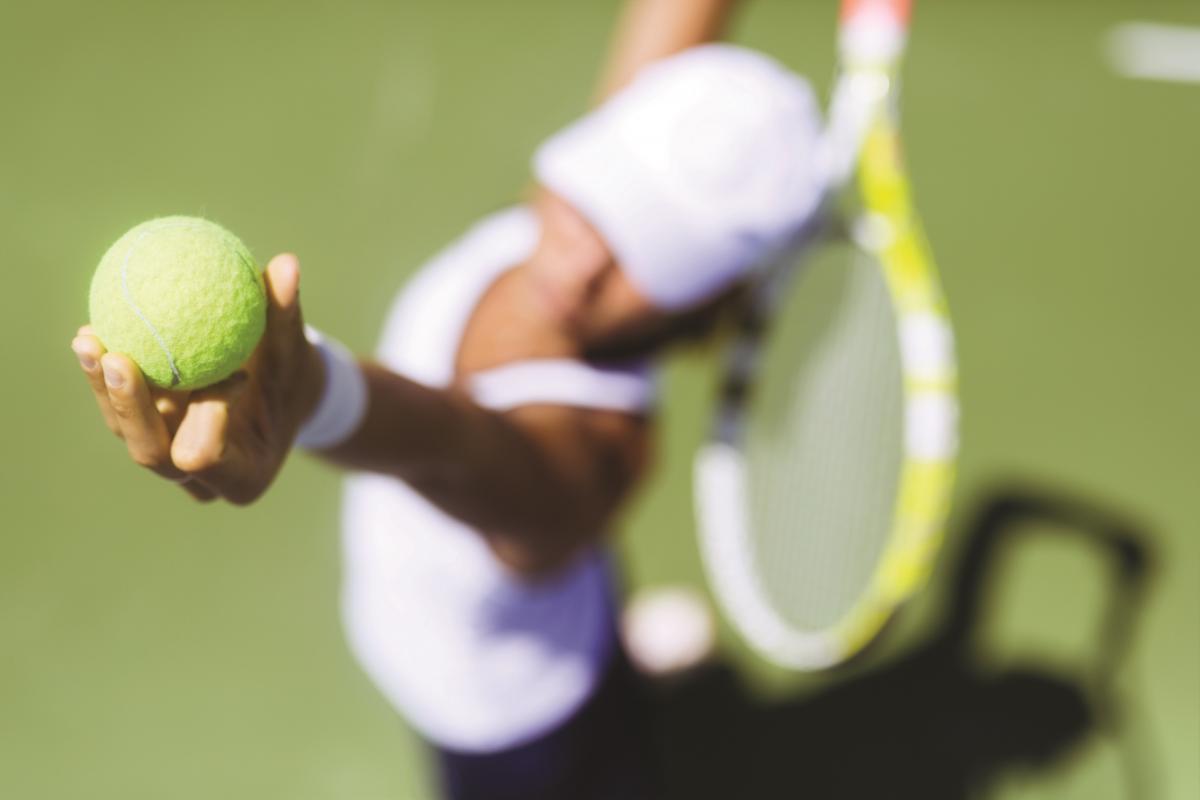
Bringing tennis events to a central location “is one part of the business the USTA hasn’t touched before,” says Virgil Christian, the USTA’s senior director of market/facility development. “We have 82 events on the books right now for the National Campus, which will bring 100,000 people through the doors.”
The USTA National Campus, which features a 50,000-square-foot Welcome Center, will be the home for the USTA Player Development and Community Tennis divisions. But the park-like setting also will include a family tennis area with 16 Sport Court Power Game courts (eight 36-foot and eight 60-foot courts) to enable kids and adults to develop their games; a Collegiate Tennis Center, featuring 12 Plexicushion courts, concessions, locker rooms and elevated seating for 1,200; and a tournament and league area that includes 52 clay and hard courts, an administration building with training room, officials’ rooms, a stringing area, restrooms, concessions and a viewing deck. There also is an indoor courts building.
Of course, while not every venue can be as grand as the USTA National Campus, there are plenty of great multi-court tennis facilities around the country suitable for all types of tennis events.
Beaumont, Texas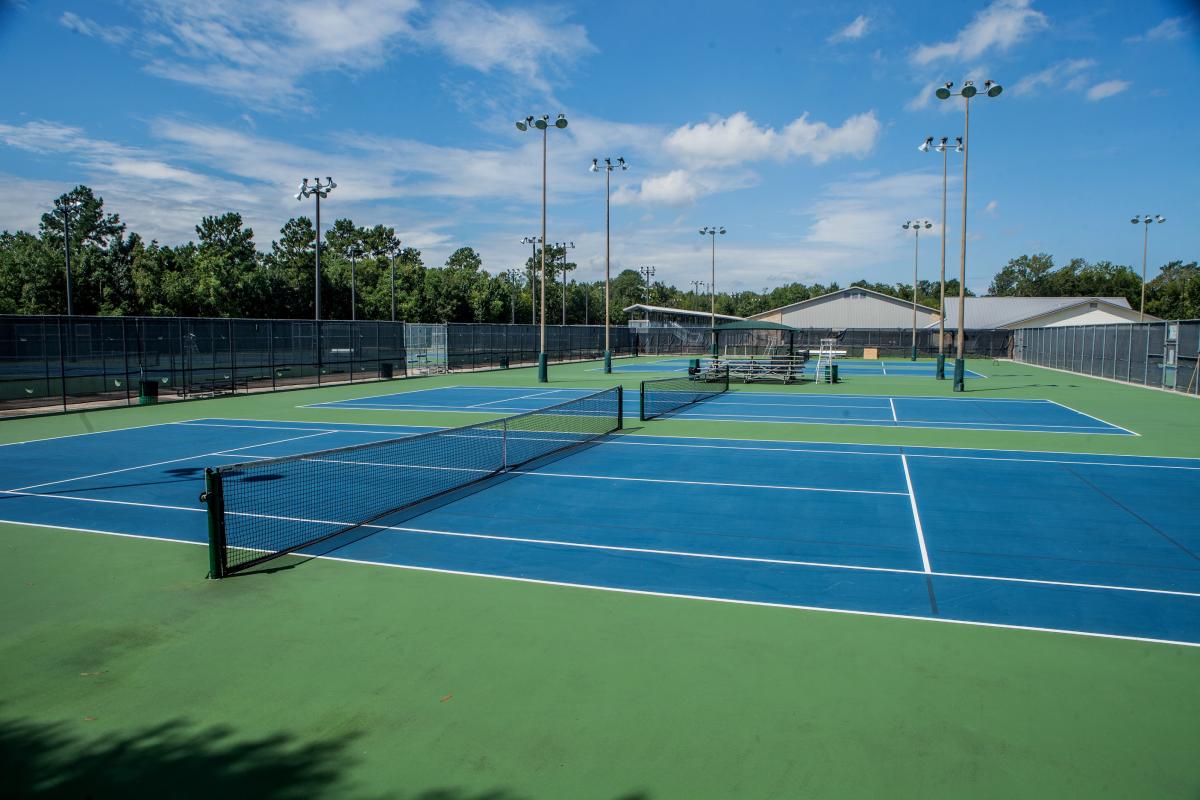
Freddie Willard, the sales director for the Beaumont CVB, says the Southeast Texas Tennis Association (SETTA) was instrumental in getting the center upgraded. “They’re just a great organization to work with,” she says. “We have a very active tennis community here and SETTA always assists the CVB when we’re trying to bring tennis events to Beaumont. They act as the local host, help get volunteers, plan opening ceremonies and so much more.”
The Municipal Tennis center hosts many tournaments, from city championships to USTA Pro Futures events. For the last two years, the venue has hosted about 600 players in the USTA Adult 55 and Over Tournament. Since 2012, the facility has been the home of a tennis camp held by the Andy Roddick Foundation each June. For larger events, says Willard, the city will also use the 16 courts at Lamar University, which also offers stadium seating.
Bentonville, Arkansas
“There’s a big following for tennis in Bentonville; we have lots of activity,” says Luke Charpentier, the sports sales manager for Visit Bentonville. That interest in the sport translates to strong support for events coming into the area. “Tennis people here are very interested in helping with tennis events and being a part of it all.”
One of the main places to play in Bentonville is Memorial Park, which has 12 lighted hard courts. This year, the city did some renovations that included adding permanent seats on all courts for players to utilize during changeovers. Memorial Park also has hosted large events, including the Division II college championships. “We’re looking to bring in more events, too,” adds Charpentier. “We’re doing some neat things that continue to make it a very attractive venue.” In the fall, the park hosted a USTA Level 3 tournament, which used courts at other nearby venues, too.
The Walton Life Fitness Center, for instance, offers four indoor and four outdoor hard courts and also helps with large tennis events in Bentonville. One of the unique events held at Walton is the “Spam Slam,” sponsored by Hormel, the largest adult tennis tourney in the state. The 18th Spam Slam was held in June and brought in 420 entrants.
Connecticut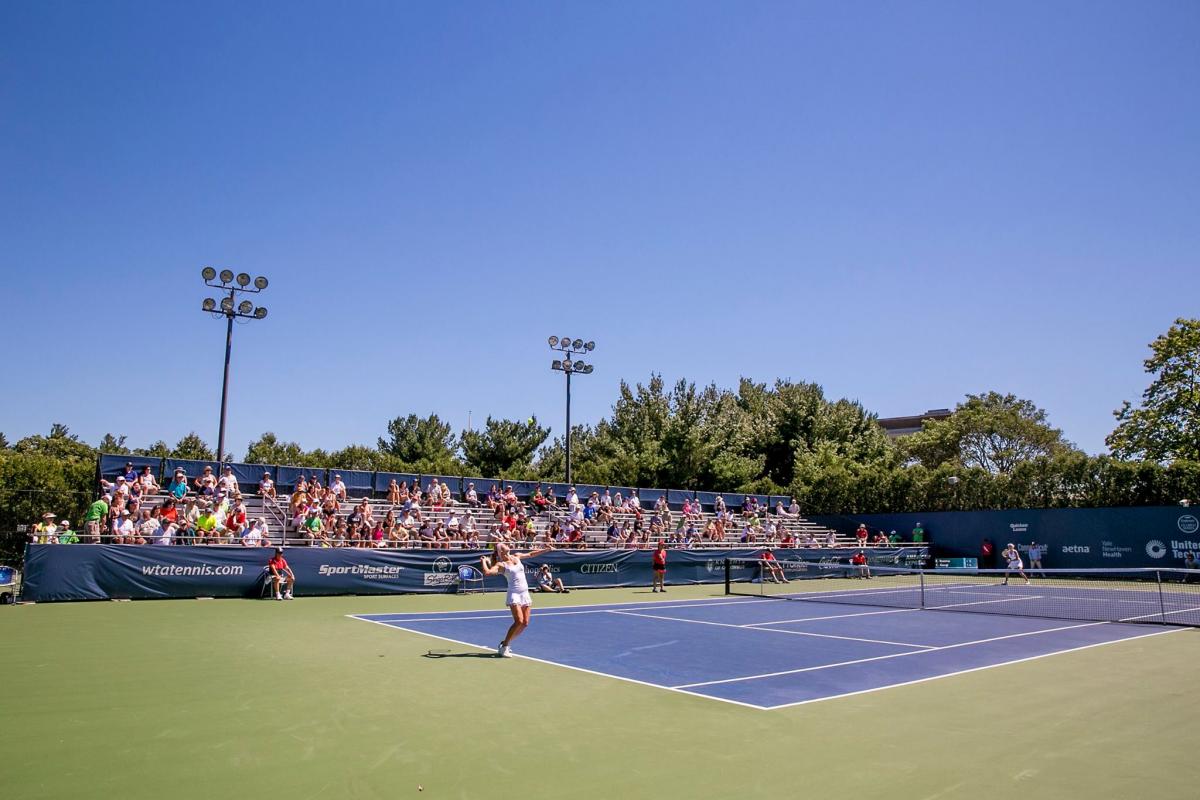
“The Connecticut Tennis Center really is one of the gems of the state,” says Bob Murdock, director of marketing for the Connecticut Convention & Sports Bureau. “Along with the Travelers Golf Championship (near Hartford), it’s part of our core sports events every summer.” In fact, the state’s office of tourism is heavily involved in the CT Open as one of the sponsors. The site also hosts regional tennis events and tournaments.
Other locations with multiple courts include the Four Seasons Racquet Club in Wilton, Connecticut, with 11 indoor and 12 outdoor courts, and Chelsea Piers in Stamford, which has seven indoor courts (and 11 squash courts). Connecticut also has a very active partnership of indoor clubs in the state.
Grand Junction, Colorado
The place to play in Grand Junction is the Elliott Tennis Complex, on the campus of Colorado Mesa University. The complex, which features nine hard courts, was upgraded a few years ago and now has professional lighting on all courts, spectator seating, and shade shelters on each court and between courts. There’s also a large conference room for team meetings and men’s and women’s locker rooms.
One of the largest tournaments at the Elliott Tennis Complex is the Taco Bell Western Slope Open, which was played for the 58th year in July and is the biggest annual tennis tournament on the western slope, bringing in more than 300 players of all ages, including 10-and-under.
“This is a very outdoor-centric community,” says Jennifer Stoll, the executive director of the Greater Grand Junction Sports Commission. “One of the great things is that we have 300-plus days of sunshine here on the western slope and warm up fast. We’re capable of playing outdoor sports all year round.”
Lexington County, South Carolina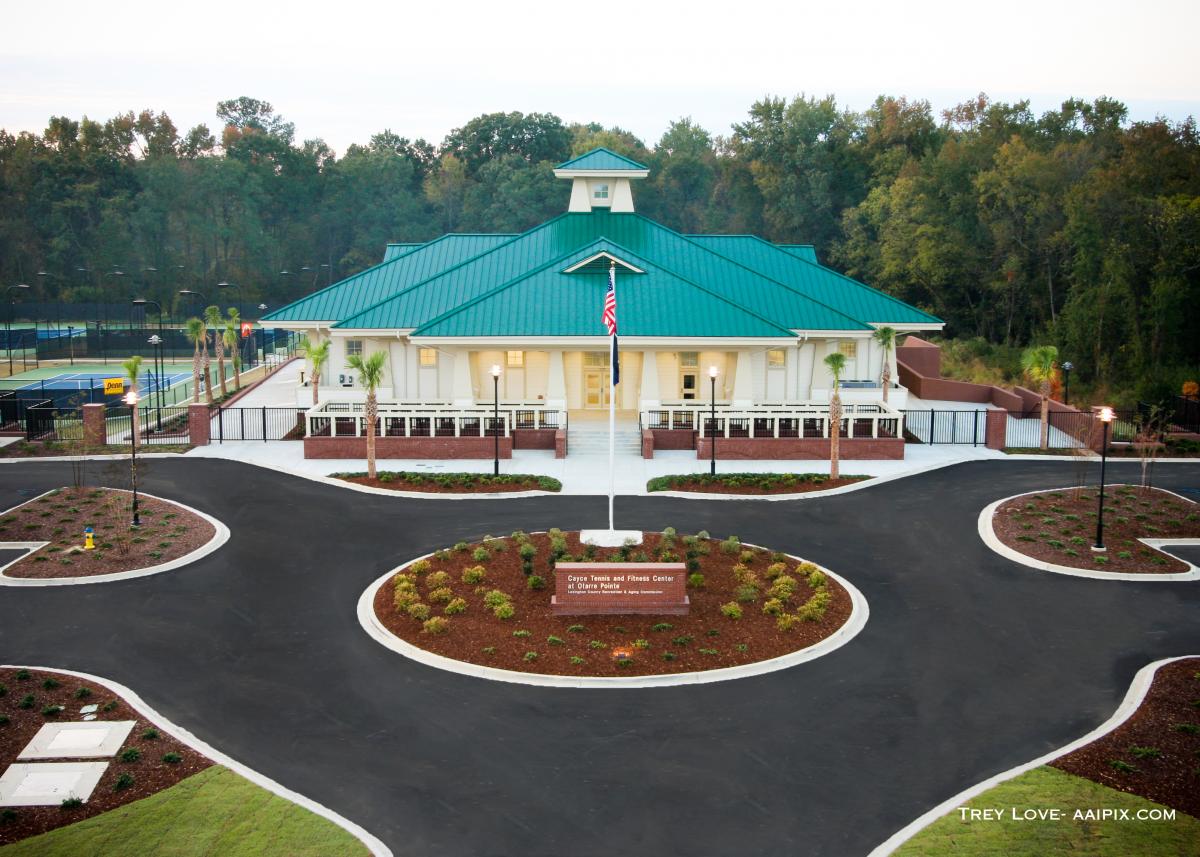
“We are very active. Some events are run at both; some at one or the other,” says Director of Operations Jorge Andrew, who is a former Venezuelan Davis Cup player and a master professional for the PTR and USPTA, the two professional tennis-teaching organizations in the U.S.
One of the largest events Lexington hosts is the National Junior TeamTennis Championships, which typically runs over two weekends in October and brings in nearly 900 players. All the courts at both sites are lined for 60-foot tennis, and the Cayce Center also has seven dedicated 36-foot courts.
The Cayce facility has a 2,500-square-foot fitness center with all the latest equipment, and there’s also a conference room, small kitchen and a full pro shop.
Mercer County, New Jersey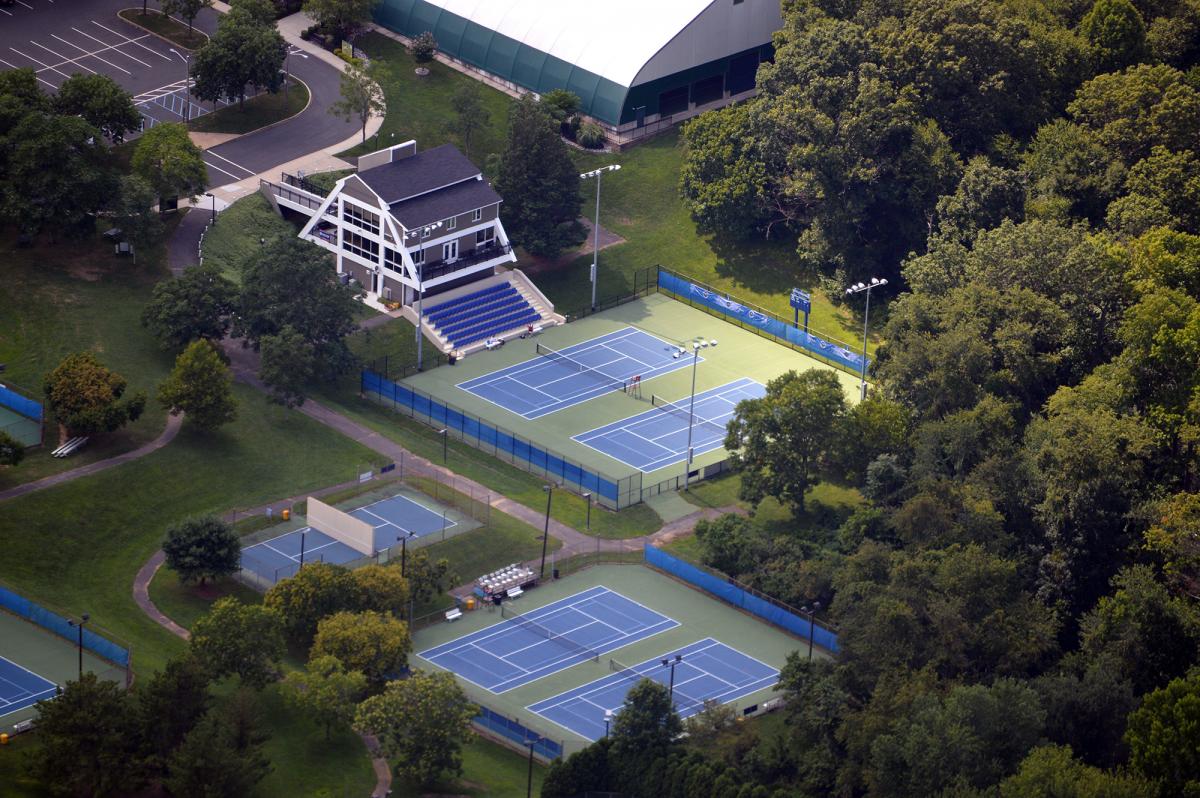
“We have many special events and tournaments, along with lesson programs for all ages, and leagues,” says Marc Vecchiolla, the director of tennis operations for the park commission. “All our courts have 60-foot ‘blended’ lines for short-court play.”
While Vecchiolla says the somewhat mild winters mean nets can stay up year round, the major events generally start in April with the Northeast Conference College Championships. “We have a lot of USTA tournaments here, too,” he notes, “along with the New Jersey State High School Championship in May. And we hold the Special Olympics State Games, which has been huge for us.”
The Mercer County Tennis Facility also is the site for a US Open Sectional Qualifier, in which players compete for a spot in the actual Qualifying Tournament of the US Open professional event. “The road to the US Open actually went through Mercer County,” Vecchiolla says, as the men’s and women’s winners in Mercer County won the national event and played in the Qualifying Tournament for the US Open.
Oklahoma City
Oklahoma City has a rich tennis history, including hosting Davis Cup play in 2002. The premier facility is the Oklahoma City Tennis Center at Will Rogers Park, which offers a total of 36 courts — including 24 with lights, six shorter courts for youth play, and six indoor courts. The OKC Tennis Center has won a number of awards, including the 2016 USTA Outstanding Facility Award, which was presented during this year’s US Open in New York City.
“We ho
In 2015, the center saw a $3 million capital improvement that included adding the six climate-controlled indoor courts and six dedicated youth tennis courts, making the OKC Tennis Center the largest public park tennis facility in the central U.S.
Breedlove says that for larger tournaments, such as the massive USTA Missouri Valley Adult Sectionals, they’ll also use the 12 outdoor courts at the Earlywine Tennis Center, which also is part of the park and rec system. “Both facilities work hand in hand,” she says, and are managed by Director of Recreational Programming Steve Henry, a USPTA Elite Teaching Professional.
Tuscaloosa, Alabama
The newest tennis feature in Tuscaloosa is the Center Court Tuscaloosa facility, which opened last year and features six lighted clay courts, four hard 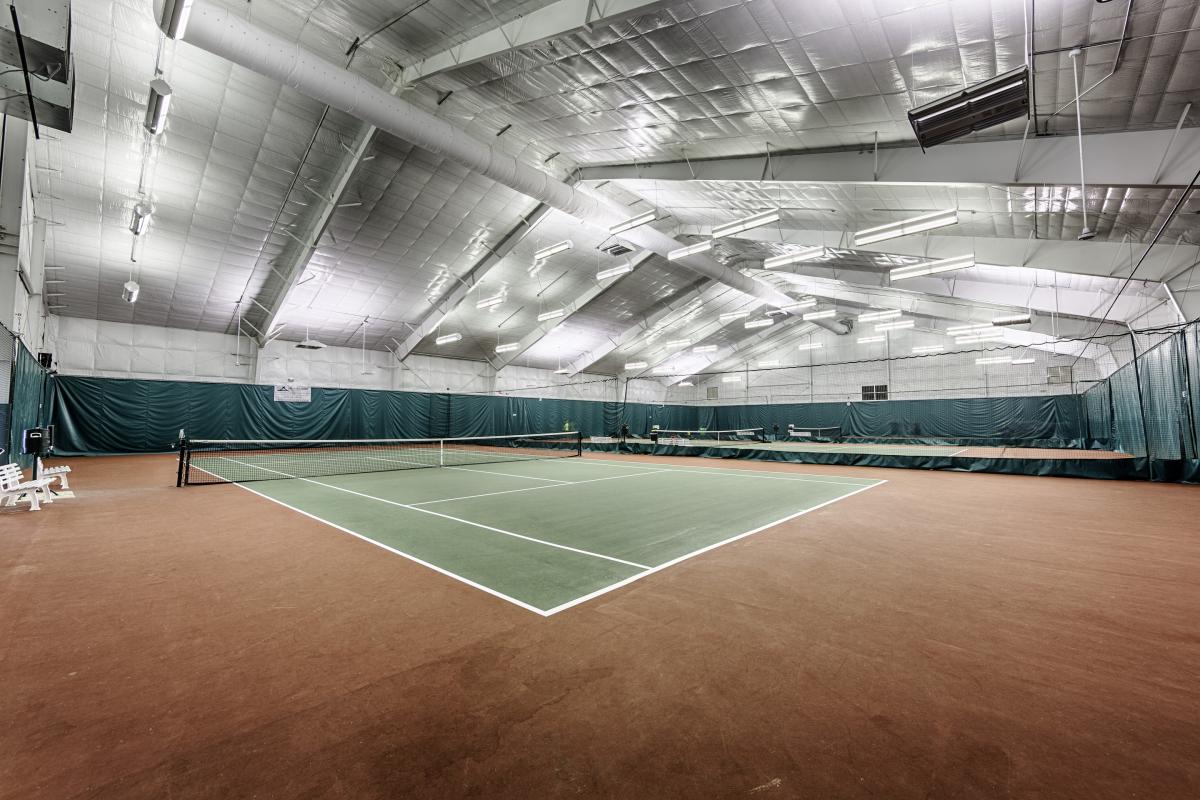
“We hold several USTA events throughout our facilities, along with NCAA regionals,” Kasten says. The University of Alabama–Tuscaloosa has 12 outdoor hard courts, and right across the street is a rec center with 12 more outdoor hard courts. The university also had five indoor hard courts. Other venues for tennis include the eight clay courts at the North River Yacht Club and the eight clay courts at Indian Hills Country Club.
In early September, the University of Alabama’s Tennis Stadium was the site of the Alabama Adapted Athletics’ second annual Alabama Open, which is a Futures event on the International Tennis Federation’s Wheelchair Tennis Tour.
The Tuscaloosa Tennis Association (TTA) is very active in supporting events, says Kasten. “The TTA raised a lot of money for the new center, and when events come into town, they help provide volunteers,” he notes. “It’s a big group effort between the TTA and our sports commission.”

